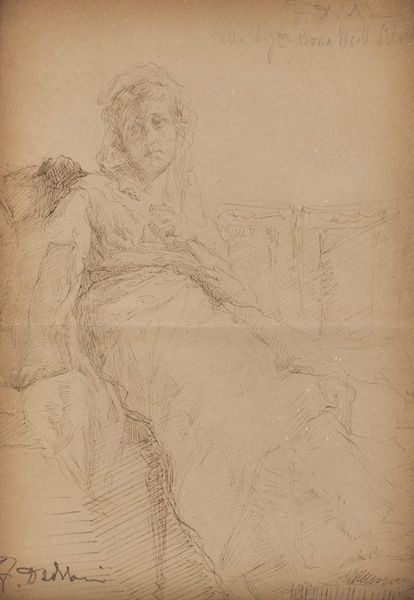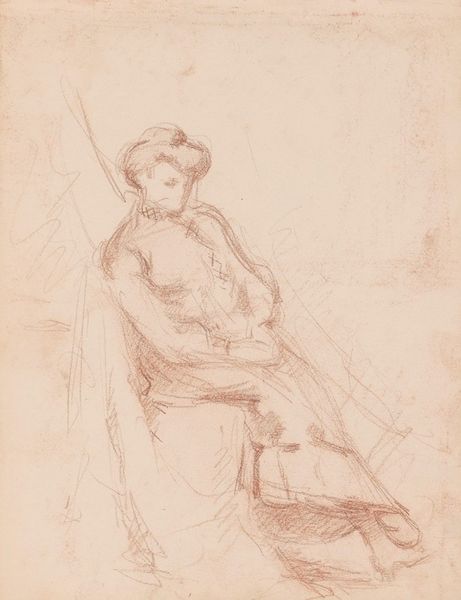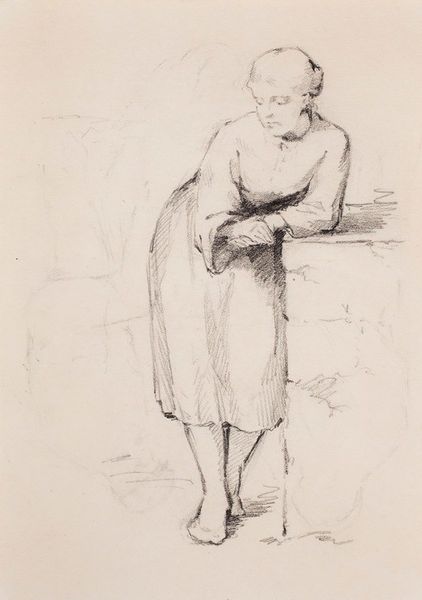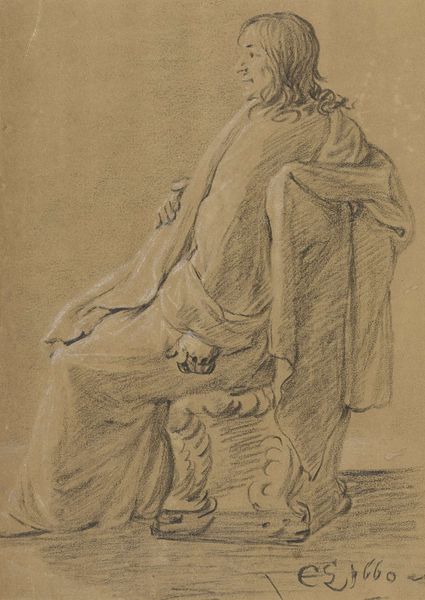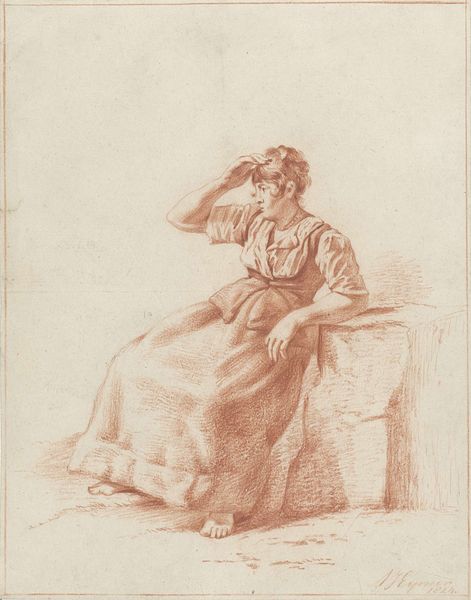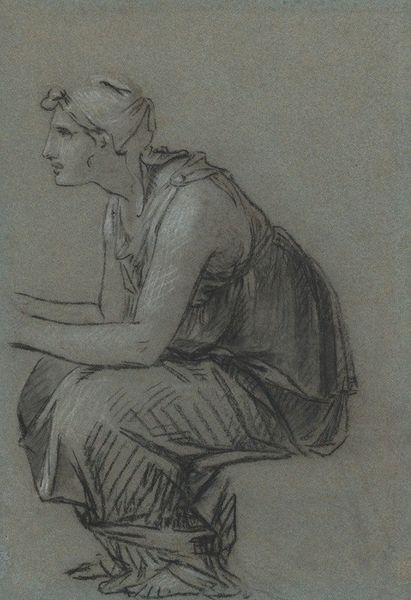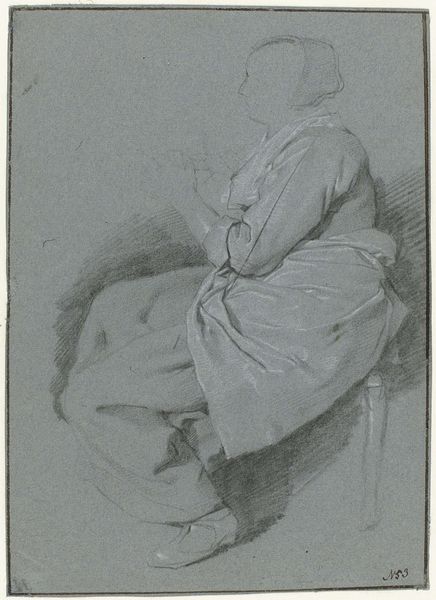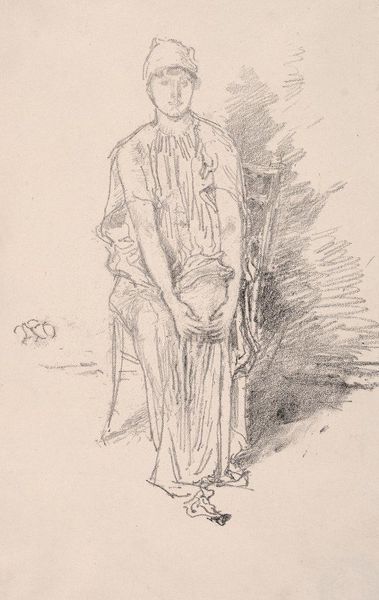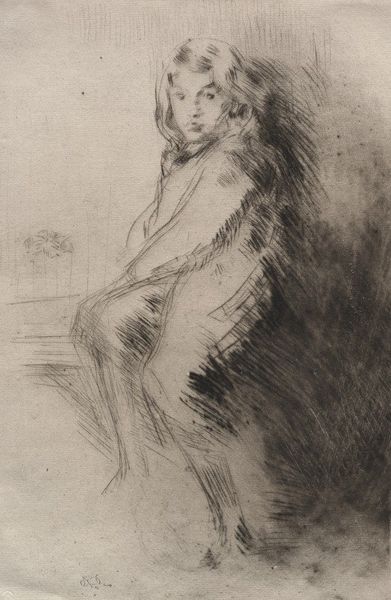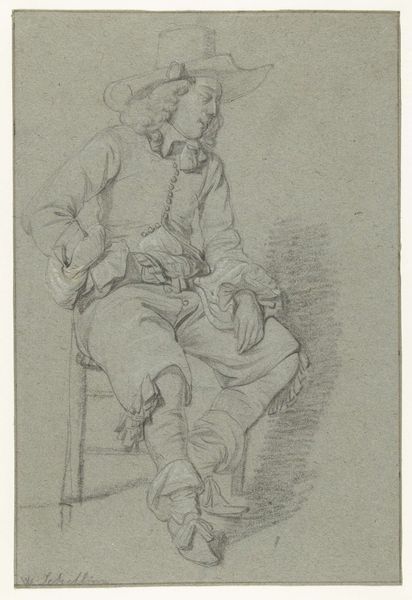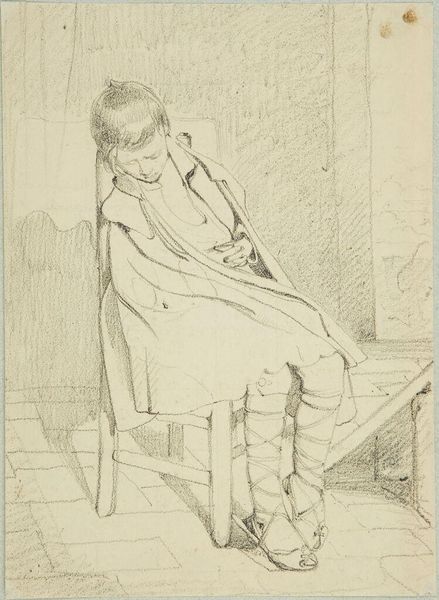
drawing, pencil
#
portrait
#
drawing
#
neoclacissism
#
pencil sketch
#
charcoal drawing
#
figuration
#
pencil drawing
#
pencil
#
academic-art
Copyright: Public Domain: Artvee
Curator: Ah, I see you're drawn to this one. It’s a pencil sketch titled "Study of a Seated Woman" by John Hoppner, created sometime between 1778 and 1810. Editor: It feels melancholy, doesn't it? The soft graphite rendering, the way she's leaning, her gaze… all heavy with thought. The background, barely articulated, just amplifies the sense of solitude. Curator: Absolutely, the deliberate ambiguity really gets under your skin. As a portraitist aligned with Neoclassicism, Hoppner’s known for his renderings of English high society. This, however, feels less about societal presentation and more about personal contemplation. Editor: Precisely. She's posed, yes, but she isn't performing. I'm curious about her lived experience. Is she confined by her position? Does this reflective pose reflect the expectations of women in that era, trapped in domesticity, mediated through the male gaze, and unable to express their own agency? Curator: It makes you wonder what she is thinking. And the lack of detail allows your own imagination to fill in those blanks, doesn't it? The smudging of the pencil almost veils her in mystery. There’s an appealing incompleteness, like a memory fading at the edges. Editor: Or like a truth struggling to be voiced, escaping the confines of representation. Even her dress seems to swallow her, enveloping and almost erasing her form. There’s something quietly powerful about her resistance, or at least the implication of it. Curator: I love that reading! It moves the drawing from being simply a technical exercise – which it partly is, of course – to something much deeper, almost a subtle rebellion against the very act of being observed. Editor: Well, aren’t all representations, to some extent, acts of power? Even in what appears to be a simple sketch, questions of identity, control, and social expectation linger. What do you see in it now? Curator: I see the power of suggestion. How a few deft lines can create a world of emotional resonance. Editor: Exactly! That quiet subversiveness whispers through the ages, prompting us to question whose stories are told and whose remain sketched in the margins.
Comments
No comments
Be the first to comment and join the conversation on the ultimate creative platform.
